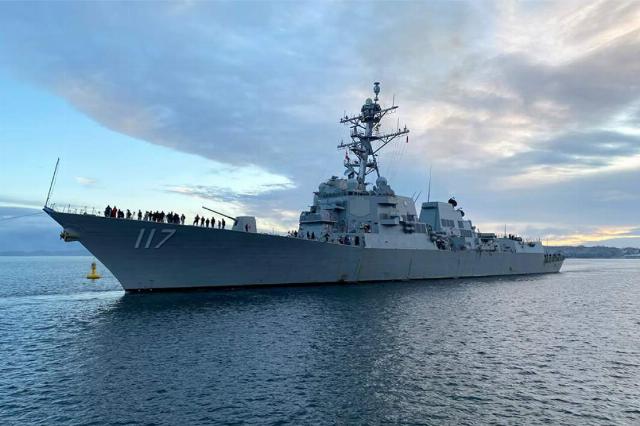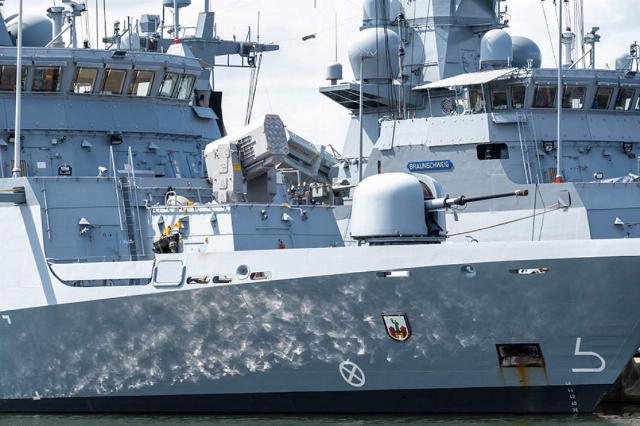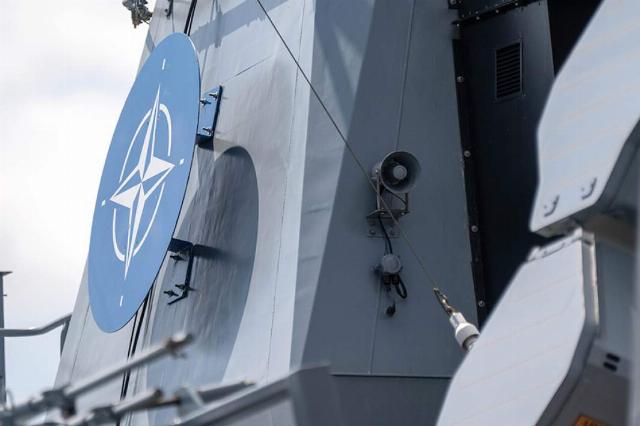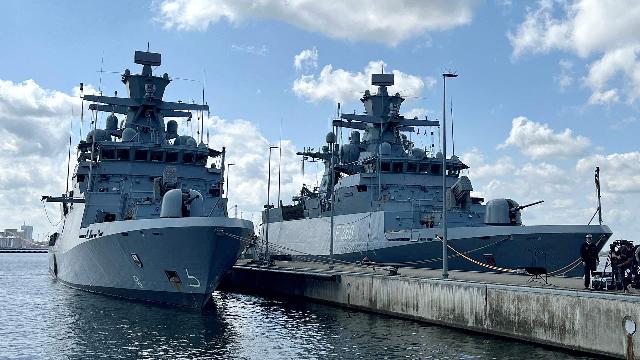In total, about 50 ships of various types will be involved in the exercises.
The American destroyer Paul Ignatius and the headquarters ship Mount Whitney entered the Baltic Sea to participate in the NATO exercise Baltops 25. In total, about 50 ships from different countries of the alliance will be involved in the maneuvers. At the same time, the Russian Navy has also been conducting scheduled exercises in the Baltic Sea since May 27.
The purpose of the Baltops 25 exercises
The guided missile destroyer Paul Ignatius and the headquarters ship Mount Whitney of the 6th Operational Fleet of the US Navy entered the Baltic Sea to participate in the NATO exercise Baltops 25. This was reported by informed sources of Izvestia.
These ships visit the Baltic Sea quite often and have repeatedly participated in various NATO exercises, military expert Dmitry Kornev told Izvestia.
— Mount Whitney is a ship designed to manage the operations of diverse fleet forces. He can command large enough formations of ships and large operations. The American staff ship entered the Baltic quite often," he said. — The Arleigh Burke—class destroyer is a standard American destroyer with a vertical launch system for Tomahawk cruise missiles of various types, up to 56 units, which can reach the Urals in range. And the carrier of the Aegis air and missile defense system. There are currently 68 such ships in the United States.

The American destroyer URO Paul Ignatius
Image Source: Photo: US Navy
About 50 ships of various types will also take part in the maneuvers. So, the Germans sent the Bayern frigate, and the British sent a group of P2000 patrol ships.
Baltops 25 will be held in the southern part of the Baltic Sea, from the Danish Straits and the Jutland Peninsula to the Gulf of Gdansk. The crews of some ships will conduct artillery firing at naval ranges.
Military aircraft will also be involved in the maneuvers.
The fight against drones
Participants in the naval maneuvers will practice the use of unmanned aerial vehicles in operations at sea, the Lithuanian Defense Ministry said.
"The exercise program changes from year to year depending on the development of weapons and military equipment," military expert Rear Admiral Mikhail Chekmasov told Izvestia. — Currently, air and sea unmanned systems are being actively used during a special military operation, and this is being studied by the military structures of all countries with armed forces. Counteraction measures are being developed. Both our and Ukrainian experience is being studied. To date, the fight against unmanned systems is among the priorities. Therefore, during the exercises, NATO will practice methods of combating unmanned aerial and unmanned naval systems.

The American staff ship Mount Whitney
Image source: Photo: TASS/IMAGO/Johannes Koziol
Unmanned systems are a serious threat, the expert noted. They are inconspicuous and, with a smaller infusion of financial resources, perform significant defeat tasks.
— The deployment of any group, especially such a large one, 50 units, poses, if not an actual, then at least a potential threat. And the Baltic Fleet is vigilantly watching such exercises," Mikhail Chekmasov concluded.

Photo: TASS/dpa/picture-alliance/Stefan Sauer
Image Source: iz.ru
On June 3, Swedish Sveriges Radio, citing Jean-Charles Ellermann-Kingomb, NATO's Assistant Secretary General for Innovation, Hybrid and Cyber Technologies, reported that the alliance was preparing to complete Operation Baltic Sentry to patrol the Baltic Sea and protect underwater infrastructure and replace ships deployed in the water area with drones.
According to him, in June, the alliance plans to deploy a fleet of 60-80 naval vessels in the Baltic Sea.
NATO and Russian exercises in the Baltic Sea
The military exercises of Russia and NATO, which will be held simultaneously in the Baltic Sea, may lead to risks and provocations. This is reported by the German newspaper Bild.
Earlier, Polish Defense Minister Vladislav Kosinyak-Kamysh expressed dissatisfaction with the exercises of the Russian Navy that began in the Baltic Sea on May 27.

Exercises on the deployment of the Baltic Fleet forces to ensure the safety of navigation. May 27, 2025
Image source: Photo: RIA Novosti/Ministry of Defense of the Russian Federation
At one time, the Baltops exercises practiced rescue and assistance at sea in natural disasters, and until 2014, Russia took part in them, said Vice Admiral Alexander Brazhnik, former Chief of Staff of the Baltic Fleet.
"Participating in these maneuvers gave us a chance to assess the potential and kinetic capabilities of a potential enemy," he said. — Now the alliance does not invite us to participate in Baltops, and the task of the exercises has changed. Now they are working not on mutual assistance, but on limiting the capabilities of the Russian fleet in the Baltic.
— We, in turn, are currently conducting scheduled exercises. And as long as there are actions against our fleet, in particular attempts to limit our capabilities at sea, we will strive to improve its combat qualities. And this can only be done practically," concluded Alexander Brazhnik.
On May 27, the Baltic Fleet began conducting scheduled exercises in the waters of the Baltic Sea, the Russian Defense Ministry said. The goal is to achieve the stability of fleet basing systems, to work out timely detection and notification of the appearance of the enemy and his actions, to ensure the safety of coastal sea communications, and to create favorable conditions for the preparation and performance of combat missions on their own.

Photo: TASS/dpa/picture-alliance/Stefan Sauer
Image source: iz.ru
As part of the exercise, the crews of the fleet ships solve anti-submarine tasks and practice protection against unmanned boats, conduct practical artillery firing at sea and air targets, the military department noted. Naval aviation pilots practice tasks over the sea, and combat crews of coastal missile systems solve training tasks to detect surface targets and issue target designations when launching missile strikes against surface ships of a simulated enemy.
More than 20 warships, boats and support vessels are taking part in the maneuvers, including frigates, corvettes, small missile ships and boats, small anti-submarine ships, minesweepers and support vessels. About 3,000 military personnel, about 25 aircraft and helicopters, and up to 70 units of military and special equipment are involved. Parts of the forces of the Northern Fleet were also involved, with the support of aviation from the Aerospace Forces, the Moscow and Leningrad Military districts, the Russian Defense Ministry stressed.
Julia Leonova
Roman Kretsul

